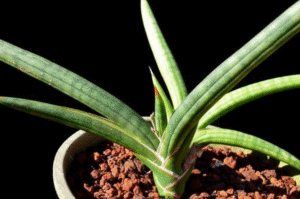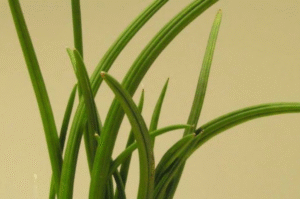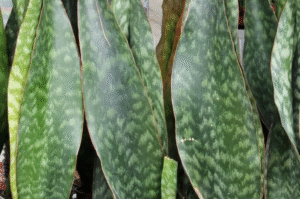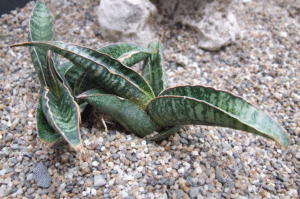Sansevieria Moonshine, also known as Moonshine Snake Plant or Sansevieria trifasciata ‘Moonshine,’ is one of the most visually captivating varieties in the snake plant family. With its striking silvery-green foliage and upright, sword-like leaves, this plant is not only a minimalist design dream but also incredibly resilient. Whether you’re a beginner plant parent or a seasoned indoor gardener, Sansevieria Moonshine is a top-tier choice for both beauty and practicality.
In this comprehensive care guide, we’ll break down everything you need to know about growing, maintaining, and troubleshooting the Sansevieria Moonshine — all from a practical, product-review-style perspective.
Overview of Sansevieria Moonshine
Botanical Name: Sansevieria trifasciata ‘Moonshine’
Common Names: Moonshine Snake Plant, Silver Snake Plant
Type: Succulent, evergreen perennial
Native Region: Tropical West Africa
Ideal For: Indoor decor, low-light environments, beginner plant parents
Sansevieria Moonshine is prized for its wide, pale green leaves with a satin-silver finish. The leaves grow in an upward rosette formation and can reach up to 2 feet tall. Unlike the common dark-green snake plants, Moonshine has a muted, almost futuristic look — perfect for modern interiors.

Key Benefits of Owning a Sansevieria Moonshine
Let’s break down the advantages of choosing this specific cultivar:
- Low Maintenance: Water once every 2–4 weeks.
- Air Purifier: Filters toxins like formaldehyde and benzene.
- Adaptable Light Tolerance: Grows in low, medium, or bright light.
- Space-Saver: Upright growth means it doesn’t sprawl out.
- Pest Resistant: Rarely suffers from insect infestations.
- Aesthetic Appeal: Unique silvery-green foliage is a conversation starter.
From an indoor gardening standpoint, it checks all the boxes. Think of it as the iPhone of indoor plants — sleek, efficient, and practically foolproof.
Optimal Growing Conditions for Sansevieria Moonshine
1. Light Requirements
Ideal Light: Bright, indirect sunlight
Tolerates: Low-light and fluorescent lighting
Unlike many houseplants, Sansevieria Moonshine doesn’t need a sun-drenched window. It thrives in rooms with filtered natural light or even in darker corners of the house. However, to maintain its silver tones, brighter conditions are best.
Pro Tip: Avoid placing it in direct sun for long periods; the leaves may bleach or burn.
2. Watering Needs
Watering Frequency: Every 2–4 weeks (less in winter)
Preferred Method: Bottom watering or soak-and-dry method
Sansevieria Moonshine is drought-tolerant, which makes overwatering its biggest enemy. Water only when the top 2 inches of soil feel dry.
Warning: Overwatering causes root rot — a common mistake with snake plant care.
3. Soil Type
Best Soil Mix: Fast-draining succulent or cactus mix
Additives for Better Drainage: Perlite, pumice, or sand
Avoid heavy or moisture-retentive soils. A loose, gritty mix ensures healthy roots and prevents fungal issues.
4. Temperature & Humidity
- Ideal Temperature: 60°F to 85°F (15°C to 29°C)
- Minimum Temperature: Avoid below 50°F (10°C)
- Humidity: Tolerates low humidity well
This plant is a perfect match for standard indoor temperatures. It doesn’t require misting or humidifiers — another win for low-effort gardeners.
5. Fertilizing Strategy
Best Fertilizer Type: Balanced 10-10-10 or cactus-specific fertilizer
Frequency: Once every 4–6 weeks during spring and summer
Don’t overdo it. Sansevieria Moonshine doesn’t need heavy feeding. Skip fertilizing during the fall and winter months when the plant’s growth slows down.
How to Repot Sansevieria Moonshine
Sansevieria Moonshine has a slow to moderate growth rate. Repotting is only necessary every 2–3 years or when the roots outgrow the pot.
Steps to Repot:
- Choose a pot 1–2 inches larger in diameter.
- Use a fast-draining potting mix.
- Gently loosen the root ball and inspect for rot or pests.
- Place the plant in the center and backfill with soil.
- Wait a few days before watering to allow the roots to adjust.
Pot Material Tip: Terracotta pots are preferred; they help wick away moisture and prevent soggy roots.
Pruning and Cleaning Tips
Sansevieria Moonshine doesn’t require frequent pruning, but here’s how to keep it looking its best:
- Remove dead or yellowing leaves at the base using sterilized scissors.
- Wipe leaves with a damp cloth to remove dust and enhance the natural shine.
- Cut off damaged tips to prevent spreading browning.
Blooming: What to Expect
Although rare indoors, Sansevieria Moonshine can produce small, fragrant white-green flowers on tall stalks under ideal conditions. However, blooming isn’t guaranteed, and many growers never see flowers. Focus on foliage over flowers — that’s where this plant truly shines.
Common Problems & Troubleshooting
1. Yellow Leaves
Cause: Overwatering or poor drainage
Solution: Check soil moisture, reduce watering, and ensure the pot has drainage holes.
2. Wrinkled or Curling Leaves
Cause: Underwatering or cold stress
Solution: Water thoroughly and move the plant to a warmer location.
3. Brown Tips
Cause: Low humidity, salt buildup, or tap water chemicals
Solution: Use distilled water and clean the leaves occasionally.
4. Root Rot
Cause: Standing in soggy soil
Solution: Remove affected roots, repot in dry, fresh soil, and reduce watering frequency.
Where to Buy Sansevieria Moonshine
If you’re looking to purchase a healthy Sansevieria Moonshine, look for:
- Reputable Online Nurseries: Etsy, The Sill, Bloomscape, Amazon (check seller reviews)
- Local Garden Centers: They often have hardier stock acclimated to your region.
- Specialty Plant Stores: Ideal for rare cultivars or variegated versions
Expect to pay between $15 to $50, depending on size and source.
Maintenance Checklist
| Task | Frequency |
| Watering | Every 2–4 weeks |
| Fertilizing | Monthly (Spring–Summer) |
| Dusting Leaves | Bi-weekly |
| Pruning | As needed |
| Repotting | Every 2–3 years |
Conclusion
Absolutely. If you’re looking for a plant that blends elegance, low-maintenance care, and durability, Sansevieria Moonshine delivers. It’s an excellent addition to homes, offices, and even low-light commercial spaces. Its futuristic look and resilient nature make it ideal for both new and experienced plant lovers.
In our expert opinion, this plant is a 9.5/10 for indoor plant care — slightly demanding when it comes to watering precision, but otherwise foolproof. With proper care, Sansevieria Moonshine can easily live for decades, providing a timeless touch of greenery to your space.






